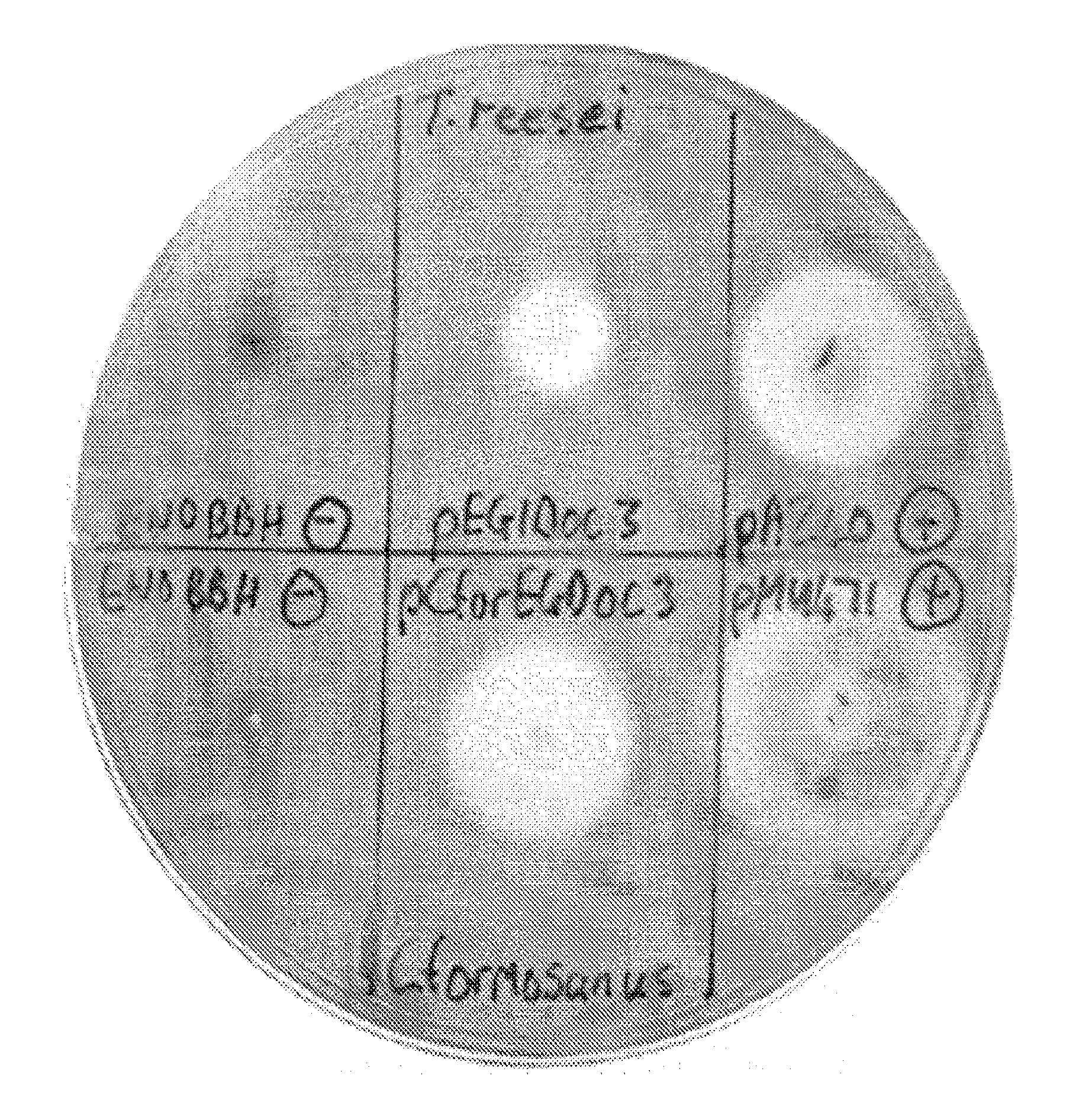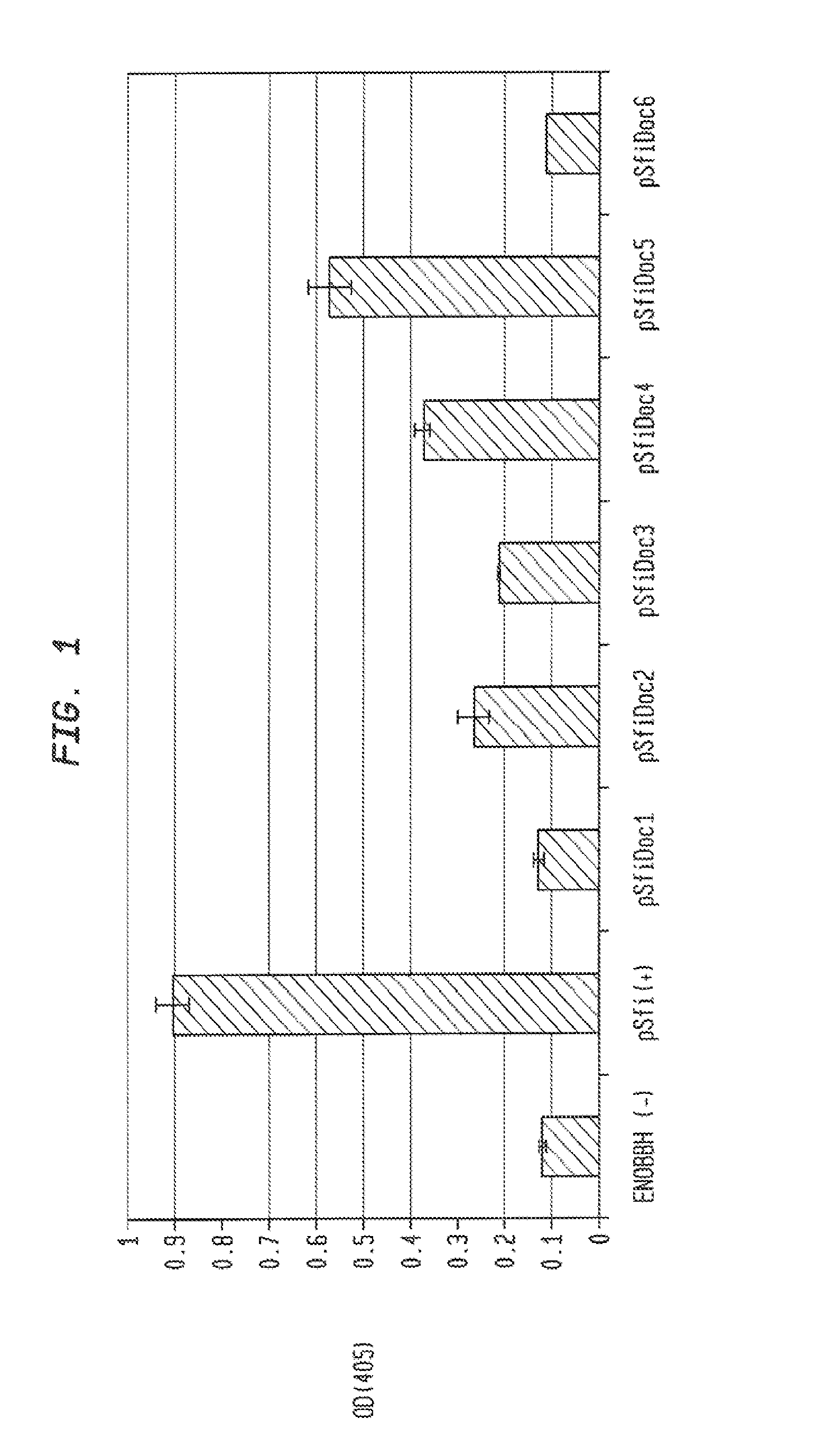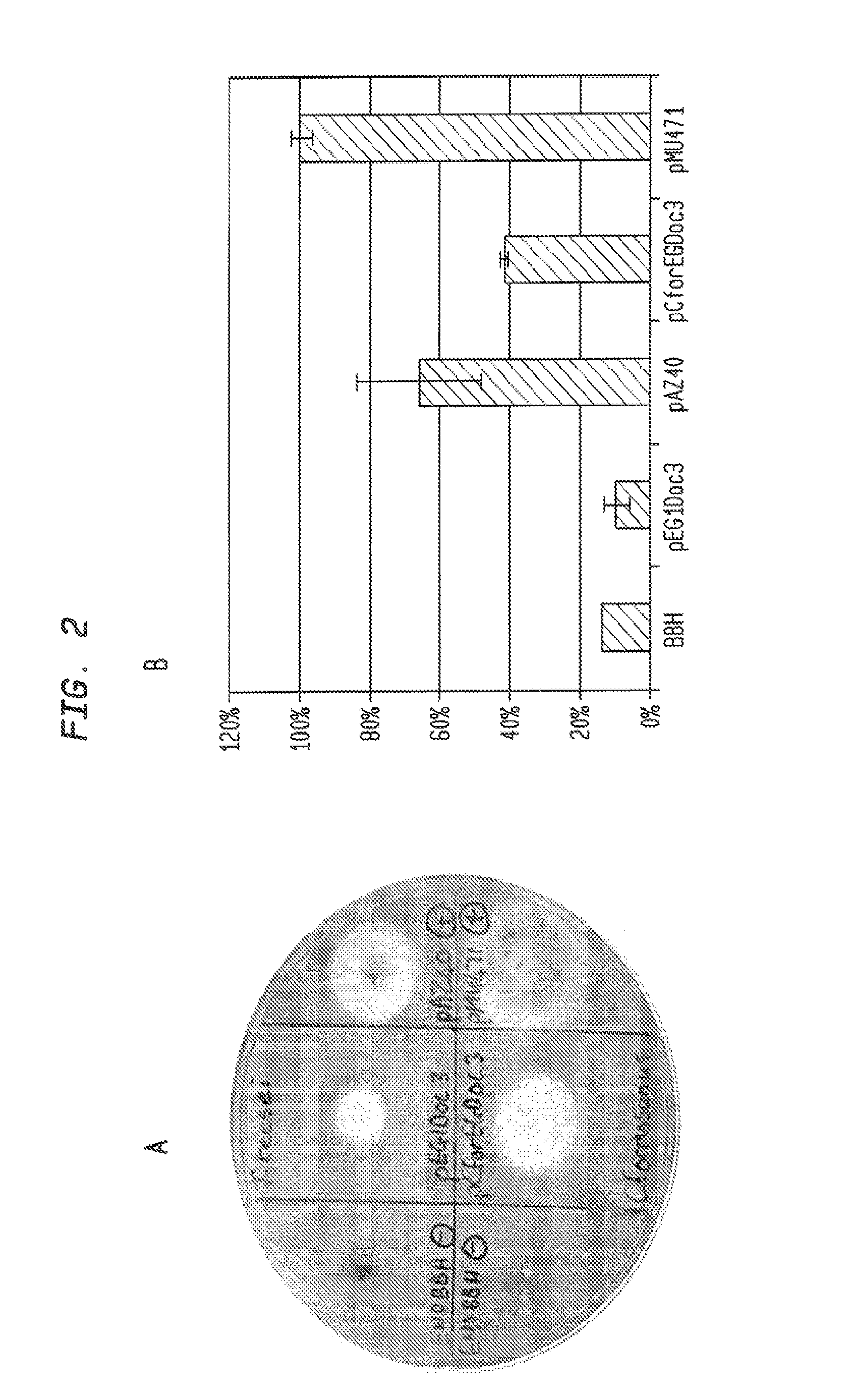Yeast Cells Expressing An Exogenous Cellulosome And Methods of Using The Same
a cellulase and yeast technology, applied in the field of yeast cells expressing an exogenous cellulosome, can solve the problems of insufficient expression and specific activity of cellulases heterologously expressed in yeast, general absence of low-cost technology for overcoming the recalcitrance of these materials, and insufficient to enable efficient growth and ethanol production
- Summary
- Abstract
- Description
- Claims
- Application Information
AI Technical Summary
Benefits of technology
Problems solved by technology
Method used
Image
Examples
example 1
Media and Strain Cultivation
[0223]TOP10 Escherichia coli cells (Invitrogen) were used for plasmid transformation and propagation. Cells were grown in LB medium (5 g / L yeast extract, 5 g / L NaCl, 10 g / L tryptone) supplemented with ampicillin (100 mg / L) or kanamycin (50 mg / L). 15 g / L agar was added when solid media was desired.
[0224]Yeast strains, were routinely grown in YPD (10 g / L yeast extract, 20 g / L peptone, 20 g / L glucose), or YNB+glucose (6.7 g / L Yeast Nitrogen Base without amino acids, and supplemented with appropriate amino acids for strain, 20 g / L glucose) media, using G418 (250 mg / L unless specified) or zeocin (20 mg / L unless specified), or Nourseothricin sulfate (100 mg / L unless specified) for selection. 15 g / L agar was added for solid media.
Molecular Methods
[0225]Standard protocols were followed for DNA manipulations (Sambrook J., et al., 1989, Molecular cloning: A Laboratory Manual, 2d ed., Cold Spring Harbor Laboratory Press (New York)). PCR was performed using Phusion p...
example 2
Production of a Chimeric Cellulosome in Yeast
[0237]The pieces of a cellulosome system can also be created via chimeras of multiple proteins, from multiple sources. Creating recombinant cellulosomes in this way may have a number of advantages for incorporation into a yeast CBP organism. Such reconstructions have been carried out a number of times for expression in E. coli (e.g. (Caspi J., J. Biotechnol. 135(4):351-7 (2008); Fierobe H. P., et al, J. Biol. Chem. 280(16):16325-34 (2005)).
[0238]For example, a scaffoldin can be constructed with cohesin modules from a number of species of cellulosome producing organisms. These cohesin modules bind specifically to dockerin modules from the same species, which would be attached to the catalytic domains of interest. In this way, the exact order and concentration of components of a recombinant cellulosome could be controlled. This is particularly useful in the context of CBP yeast because the complex control mechanisms used by bacteria to cont...
example 3
Synthetic Constructs for Cellulosome Expression
[0241]Table 7 gives the DNA sequences used in this study to express a chimeric cellulosome components. The left column denotes the species and gene from which sequences were obtained to create the chimeric scaffoldins in the case of ScfA, ScfB1, and ScfB2. Fusions of S. fibuligera BGLI with dockerins were completed by yeast mediated ligation, and the resulting constructs were tested for activity in yeast. Of the dockerins tested, those from Clostridium cellulolyticum, Clostridium thermocellum, Clostridium josui, and Clostridium cellulovorans allowed expression of active, secreted BGLI when fused. FIG. 1 shows the results of these activity assays. 4 of the 6 dockerins allowed S. fibuligera BGLI to be secreted to the supernatant.
[0242]Fusions of dockerins with EGs were also created. EG1 from T. reesei and EG from C. formosanus were secreted when attached to the dockerin from C. cellulovorans. (FIG. 9).
[0243]The results provide a demonstra...
PUM
| Property | Measurement | Unit |
|---|---|---|
| pH | aaaaa | aaaaa |
| temperature | aaaaa | aaaaa |
| temperature | aaaaa | aaaaa |
Abstract
Description
Claims
Application Information
 Login to View More
Login to View More - R&D
- Intellectual Property
- Life Sciences
- Materials
- Tech Scout
- Unparalleled Data Quality
- Higher Quality Content
- 60% Fewer Hallucinations
Browse by: Latest US Patents, China's latest patents, Technical Efficacy Thesaurus, Application Domain, Technology Topic, Popular Technical Reports.
© 2025 PatSnap. All rights reserved.Legal|Privacy policy|Modern Slavery Act Transparency Statement|Sitemap|About US| Contact US: help@patsnap.com



